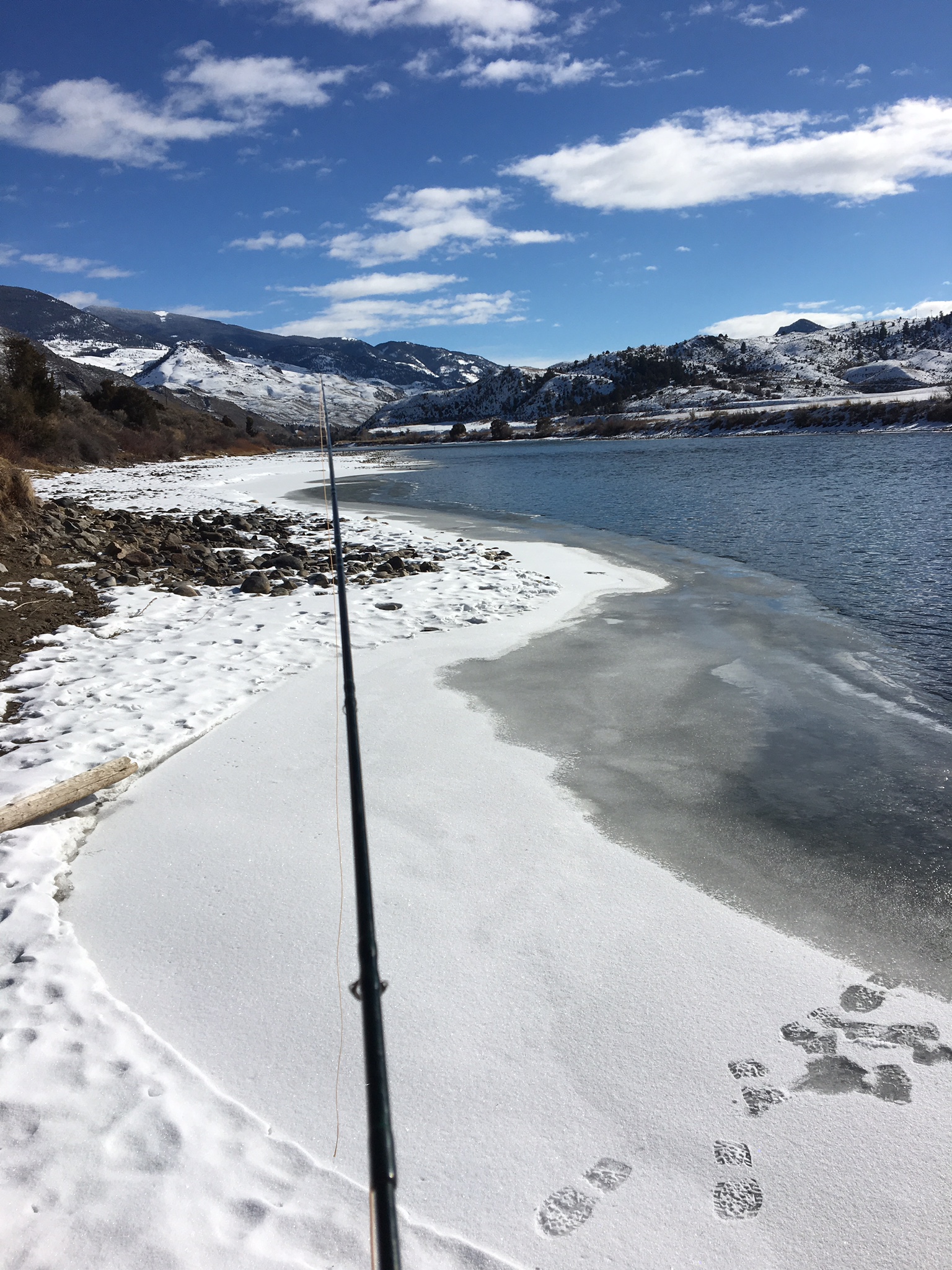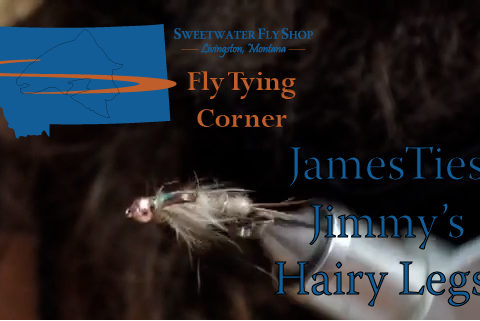
First a short fishing update, then a bit about a simple, deadly technique that a lot of people don’t think to try.
I got out for a couple of hours of fly fishing on the Yellowstone River yesterday. I headed up above Yankee Jim Canyon to escape the wind and slush. It wasn’t quite as warm up there, but it sure was a lot calmer. And the fishing was productive. In two hours, I netted a good half dozen trout and twice as many whitefish. Nothing huge, but the take included my first two Yellowstone Cutthroat of the season. It made me smile.
I caught all of the fish in a long run with moderate current. The depth dropped off from knee-deep to waist-deep and the fish were hunkered down in the deeper water. A little weight on the leader was key to getting the flies down to where the fish were hanging out. I dead-drifted a small (size 8) black Mini Sculpin, with a size 16 orange-belly Psycho Prince as a dropper. The trout were evenly distributed between the two flies (most of the whitefish ate the dropper, of course, but one ambitious whitie went for the streamer).
When we suggest to customers in the shop that they try dead-drifting a streamer, we often get a surprised response. A lot of people seem to think that streamers can only be fished by swinging and stripping. But particularly this time of year, when the fish aren’t moving very far for a meal, a streamer that drifts naturally in the current can be quite effective. And truthfully, trout will seldom turn their noses up at an easy meal during any season. A stunned or wounded minnow floating downstream fits that bill.
The technique is a simple one. Just rig up your streamer under an indicator like you would a nymph. I often like to use a loop knot to the streamer to allow it to move more freely, but you can also use a clinch knot. Depending on how heavily weighted you streamer is, you might want to add a split shot or two to the leader to get the fly down near the bottom. You can tie a nymph dropper (or even another streamer) off the bend of the hook. Then fish the rig like you would a nymph rig, casting upstream or upstream and across, mending as necessary to keep a drag-free drift, and setting the hook when the indicator pauses or goes under. The takes won’t be as aggressive as when you’re stripping a streamer, so keep an eye out for subtle movements of the indicator. It’s also a good idea to swing the streamer back toward the bank at the end of the drift; occasionally, a fish will hit the fly on the swing.
The best streamer patterns for this technique are tied with limp materials, such as marabou, that will move seductively in the current, as you’re not providing movement yourself. Wooly Buggers and bugger variations, Zonkers, and Mini Sculpins are some of our favorites. But just about any streamer that can be stripped can also be dead-drifted effectively.
So give it a try the next time you’re out. And stop by Sweetwater Fly Shop if you need any advice about where to go and what to use.
0



Leave a Reply
You must be logged in to post a comment.